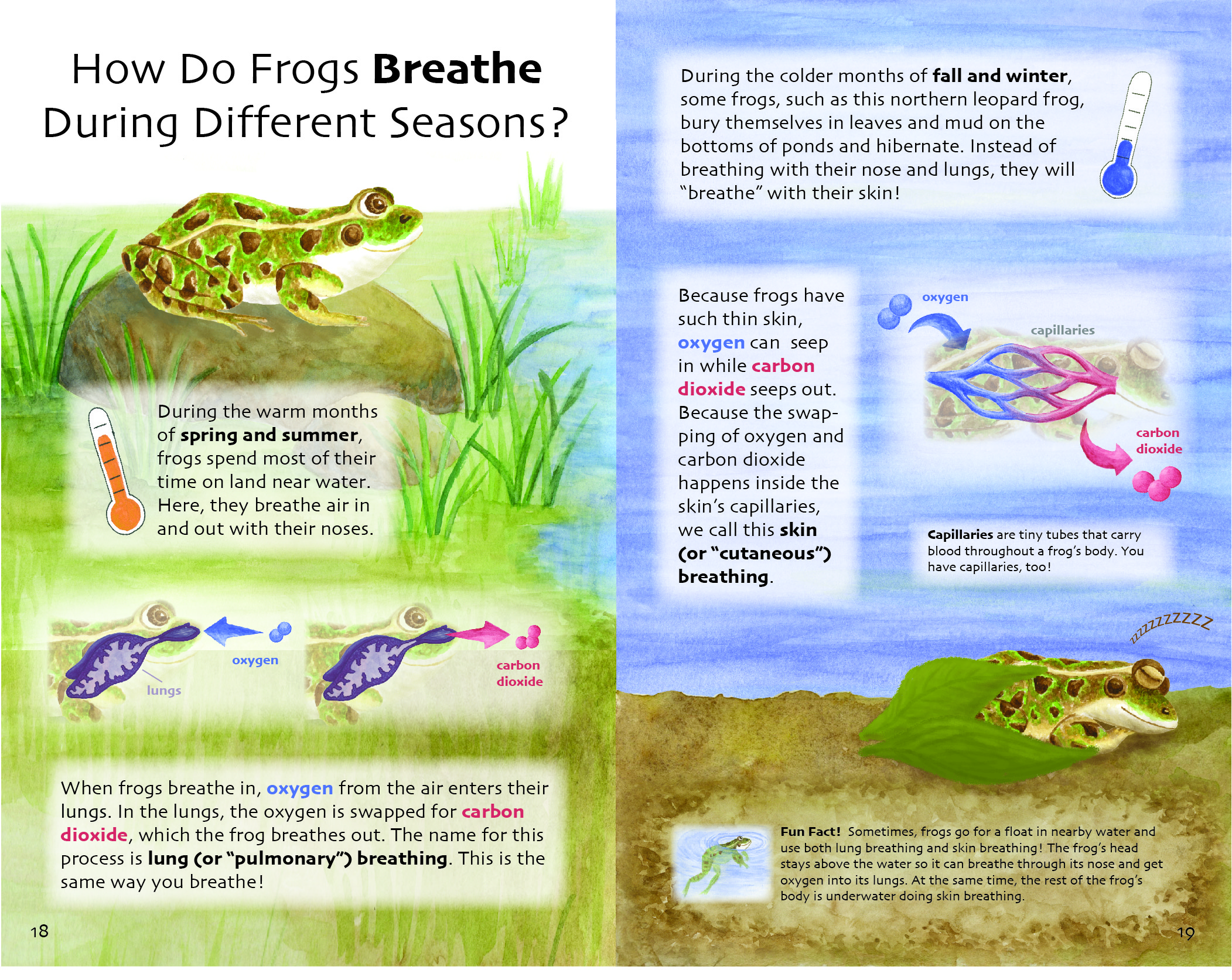2020 Honorable Mention – Hollyann Stewart

How Do Frogs Breathe During Different Seasons
The purpose of this playful yet scientific illustration is to educate upper elementary and middle school age children about how frogs, such as the northern leopard frog, breathe during various seasons. I chose to use watercolor to provide a range of textures and colors, from the spots on the northern leopard frog’s back to the grains of dirt on the pond floor. The color palette mostly consists of a wide range of greens and browns to build a natural environment and overall feel. Red, blue, and purple highlight important clues (i.e., temperature) about the illustration. Many aspects of the illustration are simplified and stylized in order to appeal to a younger audience. I used a two-page format because the work is intended to be part of an educational children’s library book that would be read for leisure purposes, such as a book about frogs and/or other amphibians.
Watercolor drawings depict a northern leopard frog in its natural habitat: a grassy pond area. On the left page, a red thermometer indicates the warmer months of spring and summer, during which frogs use their lungs to conduct pulmonary breathing. A diagram of the frog’s lungs simplifies this process by showing how oxygen molecules (drawn in blue) enter the frog’s lungs, while carbon dioxide molecules (drawn in red) exit the frog’s lungs. The same frog is represented on the right page, but the season has changed. A blue thermometer indicates that the temperature is cooler now, and the frog is shown sleeping underwater in a pile of mud and leaves. Another simplified diagram shows how, during hibernation, some frogs can use the capillaries in their thin skin to perform cutaneous breathing. Blue correlates with oxygen-rich capillary blood, while red correlates with carbon dioxide-rich blood.
Blocks of text provide further information about the phenomena represented by the illustrations. I added color and weight changes to the text in order to emphasize key terms, such as “carbon dioxide” and “fall and winter.” On the bottom of the right page, you can find a small illustration of a frog swimming in water. Adjacent to this, a block of text explains how frogs can simultaneously conduct pulmonary and cutaneous breathing when they swim with their heads above the water. This “fun fact” provides additional information for curious readers that want to know more. Because my intended audience is young children, more complex, scientific terms like “pulmonary” and “cutaneous” are explained and supplemented with simpler words like “lung” and “skin.”
